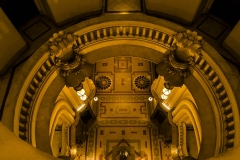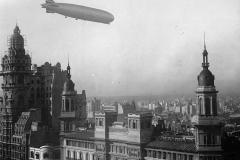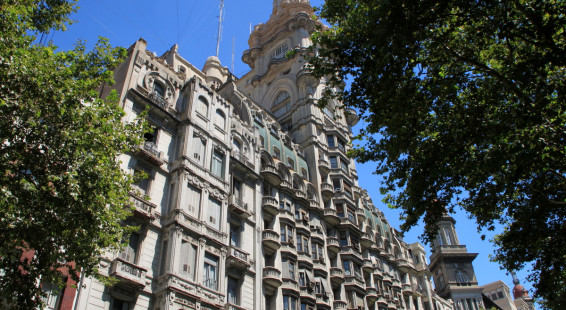
There are many old and interesting buildings in Buenos Aires, but none caught our attention quite like the Palacio Barolo (Barolo Palace), situated on famous Avenida de Mayo.
The Barolo Palace was designed by Italian architect, Mario Palanti. He was given this commission by the original building owner, entrepreneur Luis Barolo, an Italian immigrant who made his fortune in wool and cotton textiles. When the Barolo Palace was finished in 1923 it was the tallest building in South America. It is 100 meters (330 ft) tall; subsequently a taller but similar appearing sibling was constructed, the Palacio Salvo, built by the same architect in Montevideo, Uruguay. And, of course, today’s Buenos Aires skyline contains many taller structures.
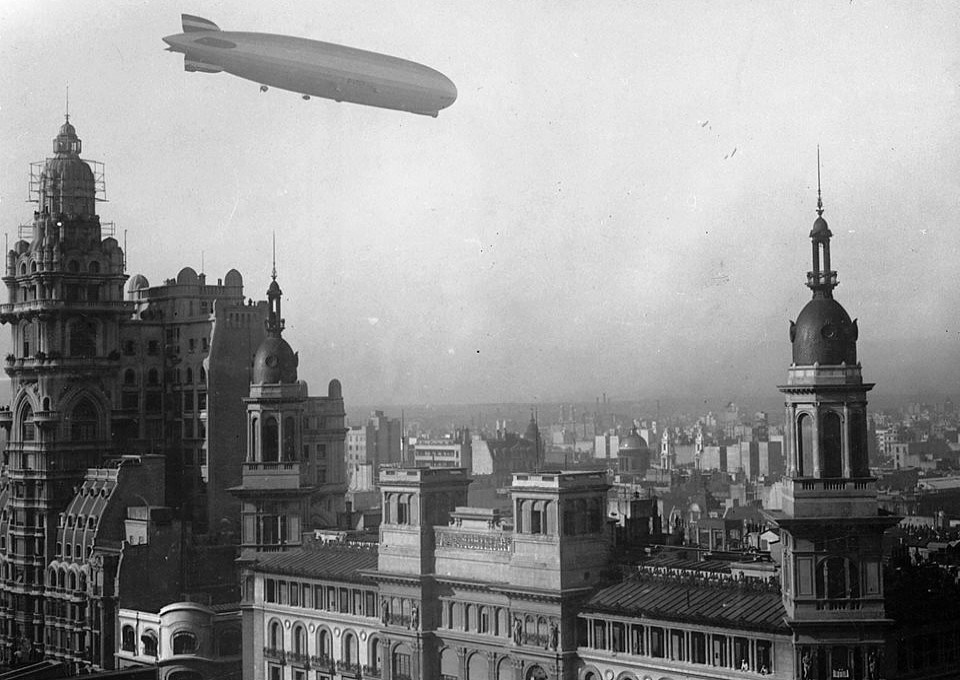
Graf Zeppelin Palacio Barolo 30 June 1934. Courtesy Wikimedia and National Archives of Argentina
The Palacio Barolo’s design was greatly influenced by Dante’s Divine Comedy, a work the architect greatly admired. The buildings 22 floors are divided into three “sections”: 1) the basement and ground floor represent hell, 2) floors 1-14 are purgatory, 3) floors 15-22 represent heaven. A lighthouse is built at the top, representing nine choirs of angels, and has a beam that can been seen for dozens of miles. Its beam welcomes ships coming to the city from the Atlantic or crossing the Rio de la Plata from Uruguay. There is other symbology in the building related to the Divine Comedy, but the many details are too numerous to discuss in this blog. You can read more at the official website if you are interested.

Barolo Palace, Buenos Aires
As a curious side note, the architect thought Europe was to going to be destroyed in a series of wars (World War I had just ended when he received his commission) and he wanted this building, the Palacio Barolo, to house the ashes of his hero, Dante, in a grand tomb which memorialized his greatest work. Remember that at this time, Argentina was one of the wealthiest countries in the world, so his thinking and the construction of this elaborate building makes sense.
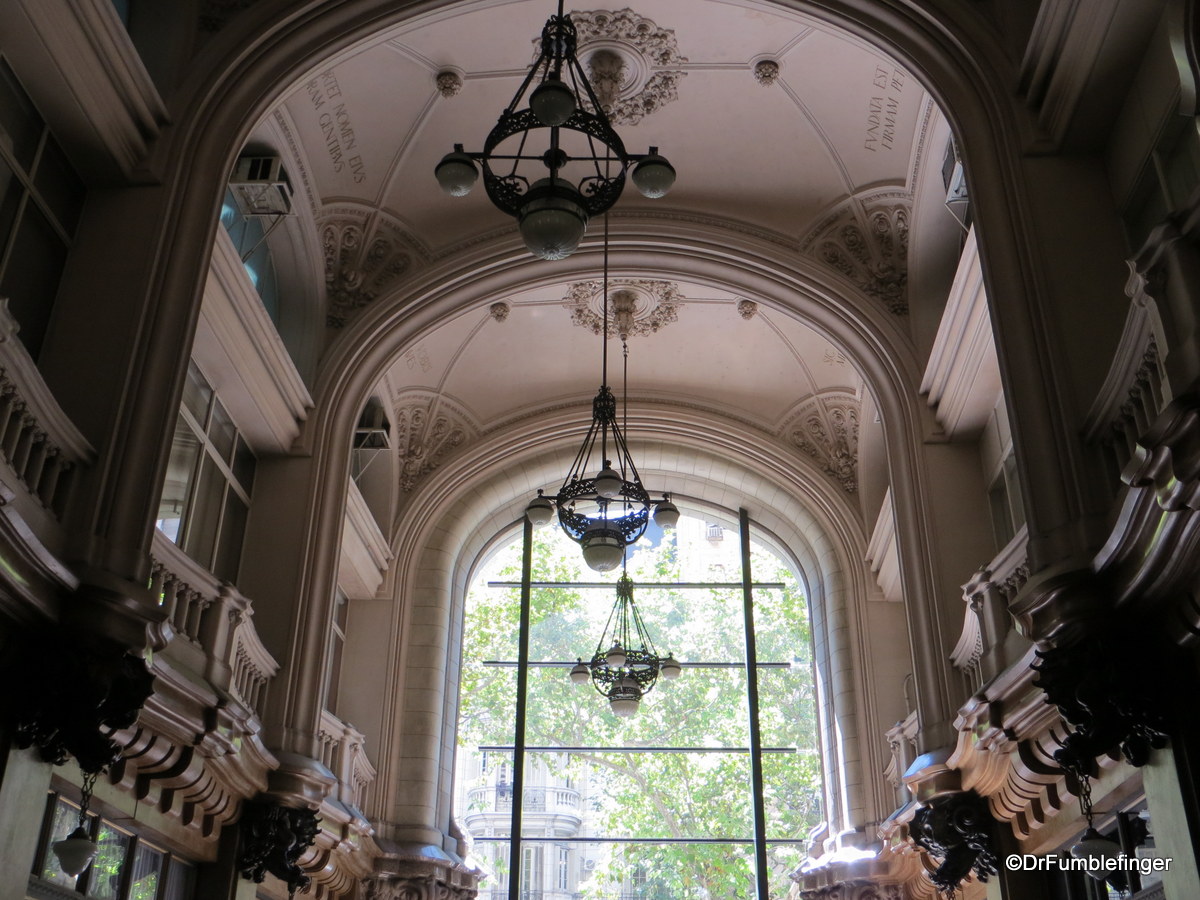
Lobby, Barolo Palace
We studied the building from its exterior and were enticed to enter and look around a little. The lobby features a beautiful central hall adorned with Latin inscriptions and a variety of Dante inspired statues. The lobby also has charmingly antiquated but functional elevators.
The building was declared a national historic monument in 1997. It was always intended to primarily be subdivided into offices for rent, and today it houses law and architect offices, travel agencies, a Spanish-language school, and a store.
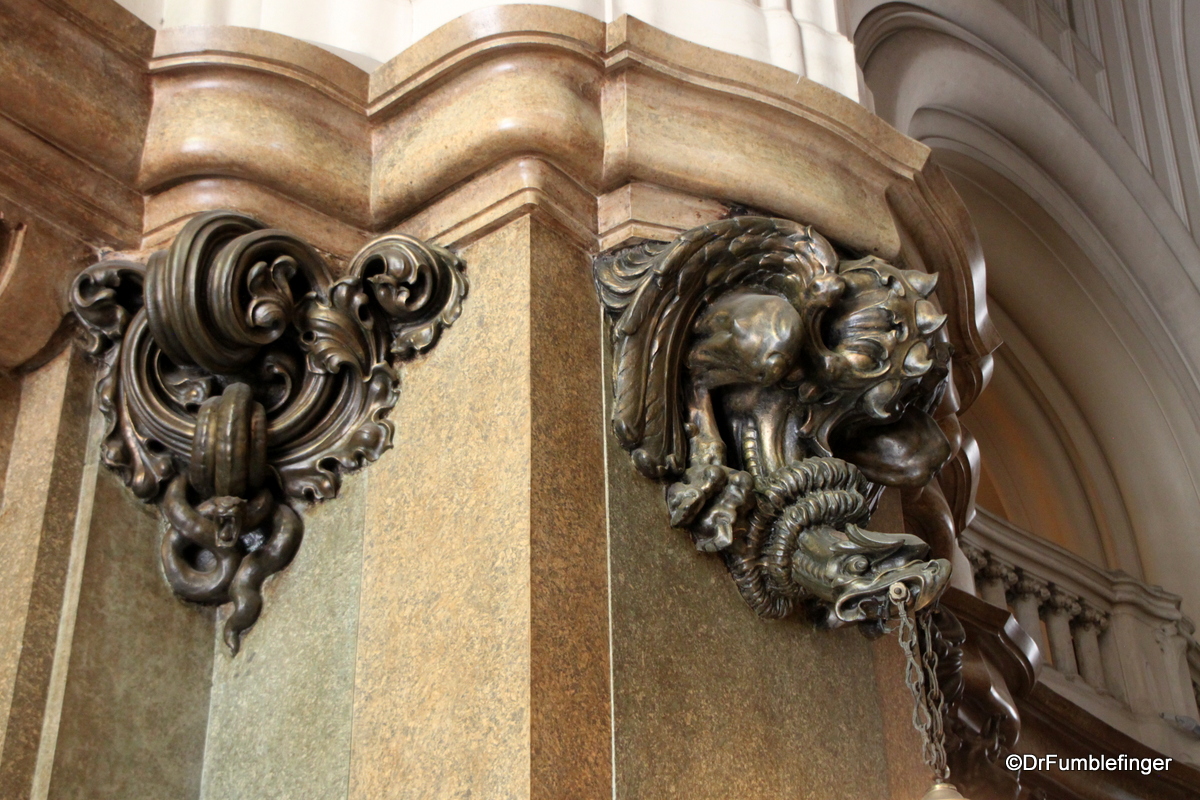
Lobby detail, Barolo Palace
I later learned that there are tours of the building available, which I think would have been interesting. A stop at the Palacio Barolo is definitely worth a small detour when you’re visiting Buenos Aires.
(Click on thumbnails to enlarge, right arrow to advance slideshow)
